8 Applications of ball bearings
Discover and learn about the five types of ball bearings and the eight common applications of these bearings.
This comprehensive guide will help you understand better how ball bearings work in various applications in the industry.
Ball bearings are used in a wide variety of applications, and chances are you've seen them at work without even knowing it!
From the wheels on your grocery store cart to the fan blades in your laptop—these little cylindrical parts do a lot behind the scenes to keep things running smoothly.
So just what makes ball bearings such an essential part of everyday life? Let's take a deeper look and find out!
The Eight common applications of ball bearings are:
-
Automotive
-
Aerospace
-
Industrial machinery
-
Construction equipment
-
Wind turbines
-
Electric motors
-
Household appliances
-
Sporting equipment
In this article, we highlight the ball bearings, their relevance in the industry, and their benefits in various applications.
We also expound on the five types of ball bearings to help you understand which of these types will be suitable for your needs.
Overview of ball bearings and their importance in various applications
Ball bearings are a type of mechanical bearing that is used to reduce friction and enable smooth motion between two rotating or moving parts.
They work by using small metal balls to rotate between two surfaces, which creates a low-friction environment.
Ball bearings are often used in applications where there is an increased need for precision and accuracy, such as automotive engines and aerospace components.
Additionally, ball bearings help to increase the life of a machine or system by reducing wear on other components.
Furthermore, they can be used to improve efficiency when compared to plain bearings, since their rolling action reduces the amount of energy necessary to move the load. In sum, ball bearings play an important role in many modern machine designs due to their ability to reduce friction and improve efficiency.
They are used in a wide range of industries, including automotive, aerospace, medical, and industrial applications.
As such, ball bearings are an integral component in the success of any machine or system.
Five types of roller bearings
-
Deep groove ball bearings
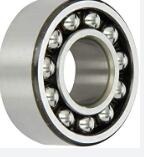
Deep groove ball bearings are a type of rolling-element bearing, where the inner and outer rings have circular grooves that contain metal balls.
These bearings are incredibly versatile and therefore can be used in a wide range of applications, such as automotive components, precision machinery, and general industrial applications.
Deep groove ball bearings are also highly economical; they require minimal maintenance due to their self-aligning design and have low friction coefficients which make them energy efficient.
Additionally, they can handle high loads while providing smooth operation with minimal noise or vibration levels.
All these features make deep groove ball bearings an ideal choice for a variety of uses.
Furthermore, because of their rugged construction, they are capable of operating in extreme conditions such as high temperatures and corrosive environments.
-
Angular contact ball bearings
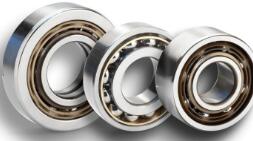
Angular contact ball bearings are designed to withstand the combined radial and axial loads.
They feature high precision and low friction, making them suitable for high-speed applications.
Depending on the type of bearing, they can be mounted in pairs or as a single unit.
Angular contact ball bearings provide superior performance when subjected to heavy loads, large vibrational forces, or extreme temperatures.
They also offer excellent durability and long-term reliability due to their robust construction.
Furthermore, angular contact ball bearings are cost-effective solutions with minimal maintenance required over their lifetime.
Thus, they are widely used in many industries including automotive, manufacturing, and aerospace where reliable operation is critical.
These bearings come in various designs, shapes, sizes, and load capacities that meet different application requirements.
Depending on the bearing type, they may also feature extra features such as seals to protect against dirt and dust, or lubrication grooves.
-
Self-aligning ball bearings
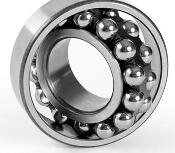
Self-aligning ball bearings are designed to compensate for angular misalignment between the inner and outer rings.
This is achieved through a convex spherical outer ring raceway and two concave inner ring raceways.
The bearings have self-aligning characteristics, which allow them to accommodate angular misalignment between the shaft and housing in both the radial and axial directions.
This type of bearing is ideal for use in applications that require frequent realignment or where alignment between components cannot be maintained.
Self-aligning ball bearings provide greater operational reliability due to their ability to adjust automatically within the limits of their load capacity in the event of misalignment.
They also possess very good dampening properties, providing a smooth operation even under difficult operating conditions.
This makes them suitable for use in high torque or shock loading applications, as well as vibration and noise reduction.
-
Thrust ball bearings
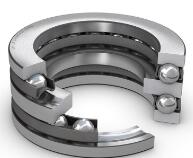
Thrust ball bearings are a type of rotary bearing. They consist of two grooved races, called the shaft washer and the housing washer, in which balls are placed between them.
The design allows for the bearing to handle thrust loads while maintaining low friction at the same time.
These bearings offer high-speed performance and require minimal maintenance, making them ideal for applications that involve frequent starting and stopping motion.
Additionally, they can operate with greater efficiency than most other types of bearings due to their ability to withstand powerful forces such as wind turbines or water pumps.
Due to these advantages, thrust ball bearings are commonly used in machinery across many industries including automotive, aerospace, medical devices, and more.
Their durability ensures long life cycles and excellent reliability even under the most demanding conditions.
They are also relatively low-cost compared to other types of bearings, making them an economical choice for many applications.
-
Specialty ball bearings
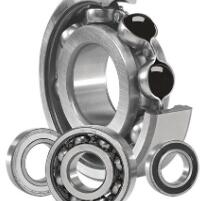
Specialty ball bearings are used in a variety of industrial applications to reduce friction, improve efficiency and extend product life.
They are typically made from hardened steel and have a harder surface than many standard ball bearings.
Specialty ball bearings can be tailored to specific requirements such as working with high temperatures or tougher conditions due to their robust construction.
The inside diameter of the bearing is generally uniform across all types, but the outside diameter can vary depending on the application.
As such, specialty ball bearings offer excellent durability for any environment that requires precision operation and long-lasting performance.
Eight common applications of ball bearings
-
Automotive
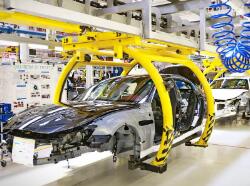
Ball bearings are used in automobiles for two primary purposes: to reduce friction between moving parts, and to support the load.
Ball bearings consist of an inner ring, an outer ring, balls, retainers, and lubricants. In the automotive industry, they are commonly used within transmissions, axles, and wheels to provide a low-friction interface and support radial loads.
Ball bearings also have multiple applications that help improve fuel efficiencies such as turbochargers, electric motors, and pumps.
Additionally, ball bearings play a critical role in reducing noise caused by vibrations generated when components move against each other inside the engine or transmission system.
In summary, ball bearings are essential components of modern vehicles due to their ability to reduce friction between moving parts while supporting radial loads, improving fuel efficiency, and reducing noise.
-
Aerospace
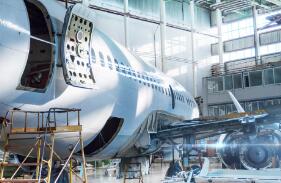
In the aerospace industry, ball bearings are used to reduce friction and increase the speed of rotation within a system.
They are often incorporated into aircraft engines, landing gear systems, and steering mechanisms.
Ball bearings offer greater load capacity than other bearing types and are designed to successfully operate in high-temperature environments with less maintenance required.
Additionally, they offer better reliability than other bearing types due to their ability to handle radial loads entering from different directions, as well as corrosion resistance which is essential for success in an airborne environment.
The use of ball bearings can also result in increased efficiency by reducing power consumption throughout an aircraft system.
Due to their small size, versatility and strength, ball bearings have become a key component of many aerospace applications that require reliable functioning with minimal maintenance, making them a critical component of all modern aircraft.
-
Industrial machinery

Ball bearings are also used in many industrial machinery and equipment. The use of ball bearings can reduce friction, facilitate axial movement, and allow for the transmission of power between parts that move relative to each other.
Ball bearings can be found in motors, pumps, conveyor belts, hoists, turbines, and compressors.
Their presence helps ensure the smooth operation of these components and increases their overall efficiency.
By reducing wear and tear on the parts they come into contact with, they also extend their life span.
Additionally, because they have low rolling resistance when compared to sliding motion mechanisms such as gears or cams, they consume less energy while still offering reliable performance.
For these reasons and more, ball bearings have become an integral part of any effective industrial machinery and equipment.
-
Construction equipment
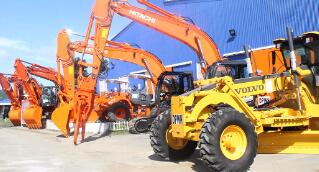
Ball bearings are commonly used in construction equipment due to their low friction and durable design.
They can be found in a variety of applications, such as excavators, bulldozers, cranes, and lift trucks.
Ball bearings provide stability and support when machines are moving heavy loads or experiencing high levels of torque.
Additionally, they help reduce wear on other parts by absorbing vibration and shock from the machinery’s operation.
Without ball bearings, it would be difficult for construction equipment to function efficiently and last a long time.
They play an integral role in ensuring that these machines operate smoothly and safely.
Furthermore, with regular maintenance and lubrication, ball bearings can extend the lifespan of construction equipment significantly.
Therefore, ball bearings must continue to be utilized in construction equipment.
-
Wind turbines

Ball bearings are an essential component in wind turbines, allowing the turbines to run efficiently and effectively by reducing friction while rotating.
Ball bearings provide support within the turbine’s main shaft, which holds together its internal components and facilitates the smooth movement of the blades.
Additionally, ball bearings help reduce vibration in the bearing system, further enhancing efficiency.
The use of ball bearings also makes it possible for wind turbines to operate under a wide range of temperatures and humidity levels. This allows them to operate smoothly even in extreme weather conditions such as high winds or storms.
In short, ball bearings play an important role in helping ensure that wind turbines can generate clean energy reliably and safely.
-
Electric motors
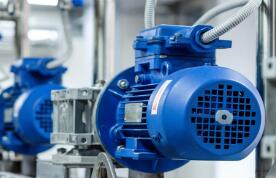
Ball bearings are also used in many electric motors to reduce friction and contribute to the smooth running of the motor.
The ball bearings are often placed between the rotor, or moving part, and the normally stationary stator.
This helps to reduce vibration, noise, and wear on the motor and its components.
Ball-bearing technology has been applied to many types of electric motors from small precision instruments up to large industrial equipment such as those found in major manufacturing plants.
In addition, ball bearings can help improve efficiency by reducing power losses due to friction and temperature increases associated with other types of mechanical bearings.
This makes them ideal for applications where a high degree of precision is required for an electric motor to perform optimally.
-
Household appliances

Ball bearings are also used in many household appliances to ensure smooth, efficient operation.
They are found in washing machines, dishwashers, and other large appliances which help to reduce noise and vibration from the moving parts within the appliance.
In addition, ball bearings can be found in kitchen mixers and blenders as well as in food processors to ensure optimal performance from these devices.
By using ball bearings in all of these applications, appliance makers and manufacturers can provide their customers with reliable products that will stand up to years of use.
With proper maintenance and care, these same appliances can last for many years with little to no repair required.
As a result, investing in quality products with ball-bearing technology built-in is always a wise decision.
-
Sporting equipment

Ball bearings are also used in a variety of sports equipment, such as bicycles and skateboards.
Ball bearings provide the rotational force needed to propel the rider forward without causing excessive friction or wear on the axles.
This allows for smoother rides with less energy expended by riders who would otherwise need to put out more effort to keep their ride going.
In addition, ball bearings can help reduce noise from grinding axles, making it easier for athletes to concentrate on their performance.
Finally, ball bearings also make for faster starts and stops, allowing athletes to transition between different movements quickly and efficiently.
Consequently, these features of ball bearings make them ideal components for sporting equipment that require smooth operation and maximum efficiency.
Conclusion
In conclusion, ball bearings are widely used in various applications due to their design characteristics which enable them to remain durable and efficient under extreme conditions.
In addition, they provide reliable and low-friction motion solutions, making them an ideal choice for modern machinery. As such, these versatile components play an integral role in many industries including automotive, aerospace, and industrial engineering.
Their ability to reduce friction and wear greatly contributes towards improved performance and efficiency of machines.
Moreover, ball bearings are cost-effective and easy to maintain thus further increasing their appeal as a viable solution for intricate machinery designs.
Thus, it is evident that ball bearings can be applied in numerous ways to increase the efficiency of both small-scale and large-scale systems.





